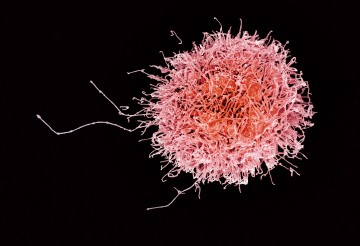Sugar belongs to the group of carbohydrates and can have several detrimental effects on our health. Sugars are relatively small molecules, which give a short energy boost but they leave the bloodstream quickly due to their small size quickly bringing down our energy. Excess intake of sugars leads to conversion into free fatty acids in the liver which contributes to the development of obesitas.
Advanced glycation end products
Next to the above described effects, sugars are involved in the formation of advanced glycation end products (AGEs). AGEs are involved in development of chronic degenerative diseases of ageing such as cardiovascular diseases, Alzheimer’s disease and complications of diabetes mellitus. Restriction of dietary AGEs has positive effects on cardiovascular diseases, wound healing, insulin resistance and increases lifespan. AGEs are a heterogeneous group of molecules formed via the Maillard reaction. The Maillard reaction occurs when reducing sugar reacts in a non-enzymatic way with amino acids in proteins, lipids or DNA. At least two other pathways can lead to formation of AGEs: oxidation of glucose and peroxidation of lipids and through the polyol pathway. The deleterious effects of AGEs in different tissues are attributed to their chemical, pro-oxidant, and inflammatory actions. The biological effects of AGEs are exerted by two different mechanisms: one receptor-independent (damage of protein structure and extracellular matrix metabolism), one involving the receptor for advanced glycation end products (RAGE) leading to increased inflammation. In addition, AGE-RAGE interaction activates NAD(P)H oxidase (a complex of enzymes which produces superoxide) which increases intracellular oxidative stress. Microvascular and macrovascular damage is attributed to the accumulation of AGEs in tissues, and is found in diabetes, rheumatoid arthritis, atherosclerosis, Alzheimer’s disease, end stage renal disease, sarcopenia, cataracts and other degenerative ophthalmic diseases, Parkinson’s disease, vascular dementia and several other chronic diseases.
Exogenous Sources of AGEs
Next to in vivo production, AGEs are found in cigarettes and foods. Heating some food promotes the Maillard reaction, which adds desirable flavour, colour and aroma and has been used for caramel production, coffee roasting, and bread baking. Some products of the Maillard reaction are added to sodas and juices. Evidence is accumulating that the average Western diet is a plentiful source of exogenous AGEs. Dietary and endogenously produced AGEs could promote a systemic glycoxidant burden, oxidant stress and cell activation, increasing vulnerability of target tissues to injury.
AGEs in the Elderly
Results show an important role of dietary and circulating AGEs in chronic degenerative diseases, which are more prevalent in the elderly.
Role of Restriction of Dietary AGEs in Lifespan
It has been demonstrated that caloric restriction increases lifespan in C. elegans and mice. Several centenarian populations have been studied, and show one common denominator: a lower caloric intake. The hypothesis is that the positive effects of caloric restriction could partly be explained by a decrease in the intake of AGEs and the associated decrease of oxidative stress.
Exercise and AGEs
There is good evidence that exercise decreases AGEs thereby reducing ageing-related diseases.
Conclusion
Foods rich in protein and fat have a high content of AGEs. To reduce circulating AGEs restriction of dietary intake of AGEs and exercise have been shown to be effective, leading to a reduction in oxidative stress and inflammatory markers.
For more detailed scientifically substantiated nutritional advice, contact Vedanta Wellbeing PhD.









